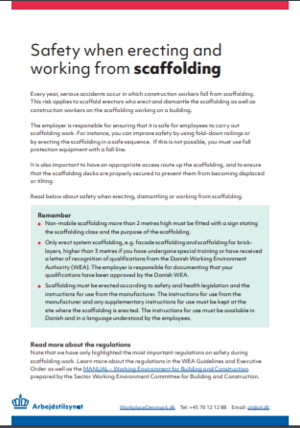Every year, serious accidents occur in which construction workers fall from scaffolding. This risk applies to scaffold erectors who erect and dismantle the scaffolding as well as construction workers on the scaffolding working on a building.
The employer is responsible for ensuring that it is safe for employees to carry out
scaffolding work. For instance, you can improve safety by using fold-down railings or by erecting the scaffolding in a safe sequence. If this is not possible, you must use fall protection equipment with a fall line.
It is also important to have an appropriate access route up the scaffolding, and to ensure that the scaffolding decks are properly secured to prevent them from becoming displaced or tilting.
Read below about safety when erecting, dismantling or working from scaffolding.
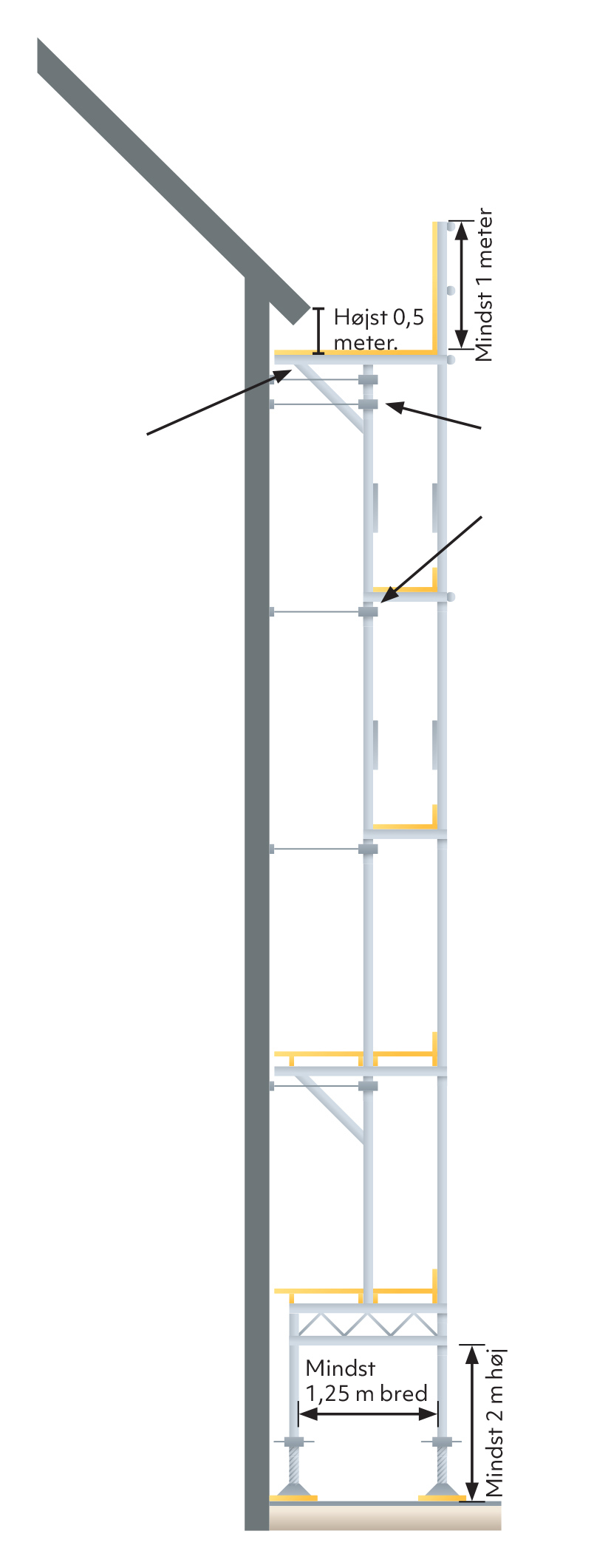
When carrying out roof work, install the scaffolding at the foot of the roof with a closed vertical and horizontal screen to prevent you from falling down. The vertical screen must be at least 1 metre high.
For roof work, secure the scaffolding to the facade at several places. This also applies when the scaffolding is covered in plastic and when fitting electric hoists or waste chutes to the scaffolding.
Adjust the distance between the wall and scaffolding to the work to be performed. E.g., for installing windows, the distance must be 10 to 15 cm. This also applies for plastering and smooth finishing.
The distance between the wall and scaffolding must never exceed 30 cm. If the distance is more than 30 cm, there must be internal railings.
If you want to be able to walk under the scaffolding, you need to set up a passage frame. Remember closed screen.
Only erect scaffolding on a firm and load-bearing base, and support blocks may not be higher than 20 cm
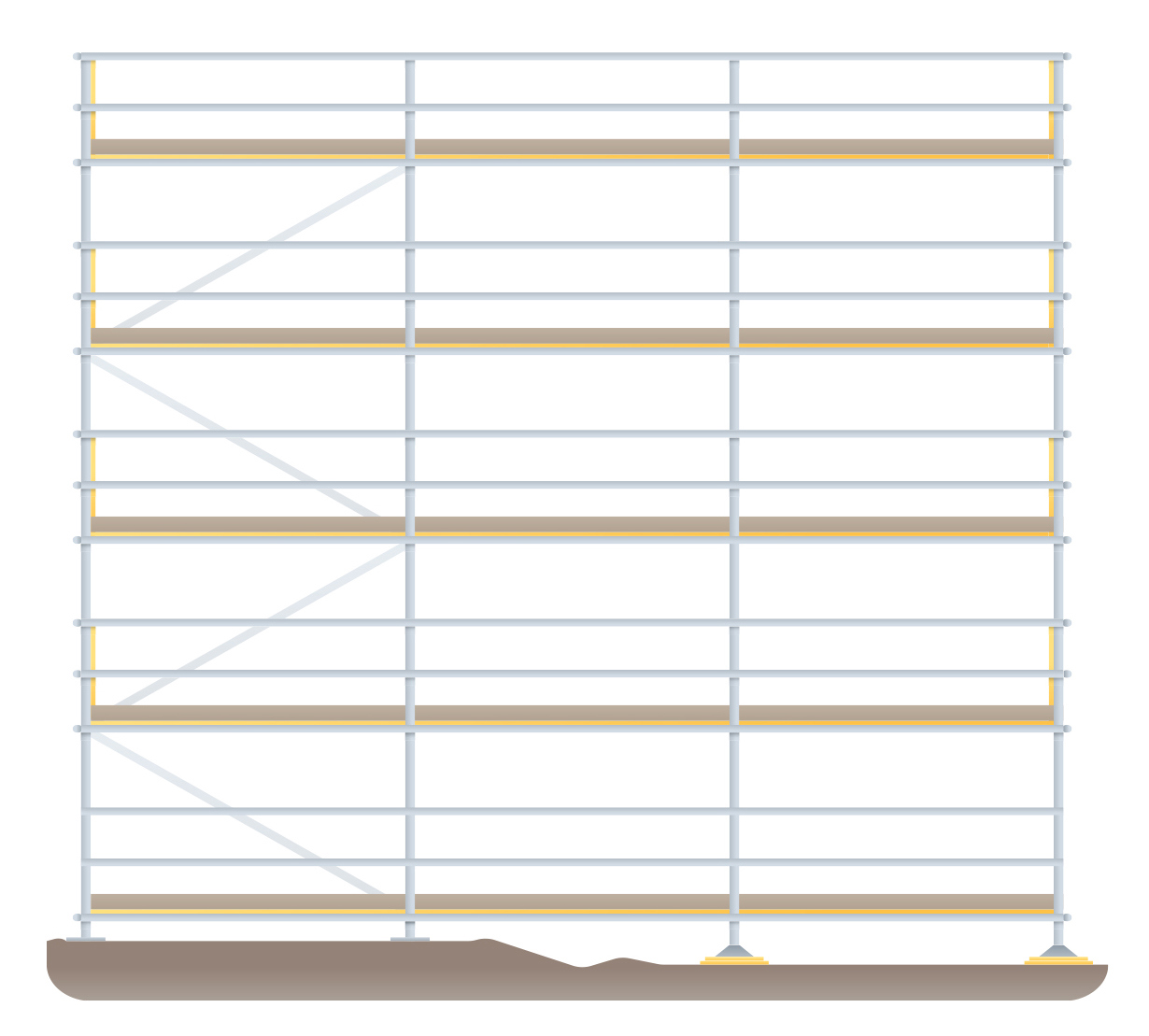
All scaffolding must have safe access routes, e.g. stairs or ladders.
Scaffolding must be reinforced, e.g. with diagonals.
Scaffolding decks placed at a height of 2 metres or more must always be fitted with full railings with hand, knee and foot rails.
Support with blocks may not exceed 20 cm.
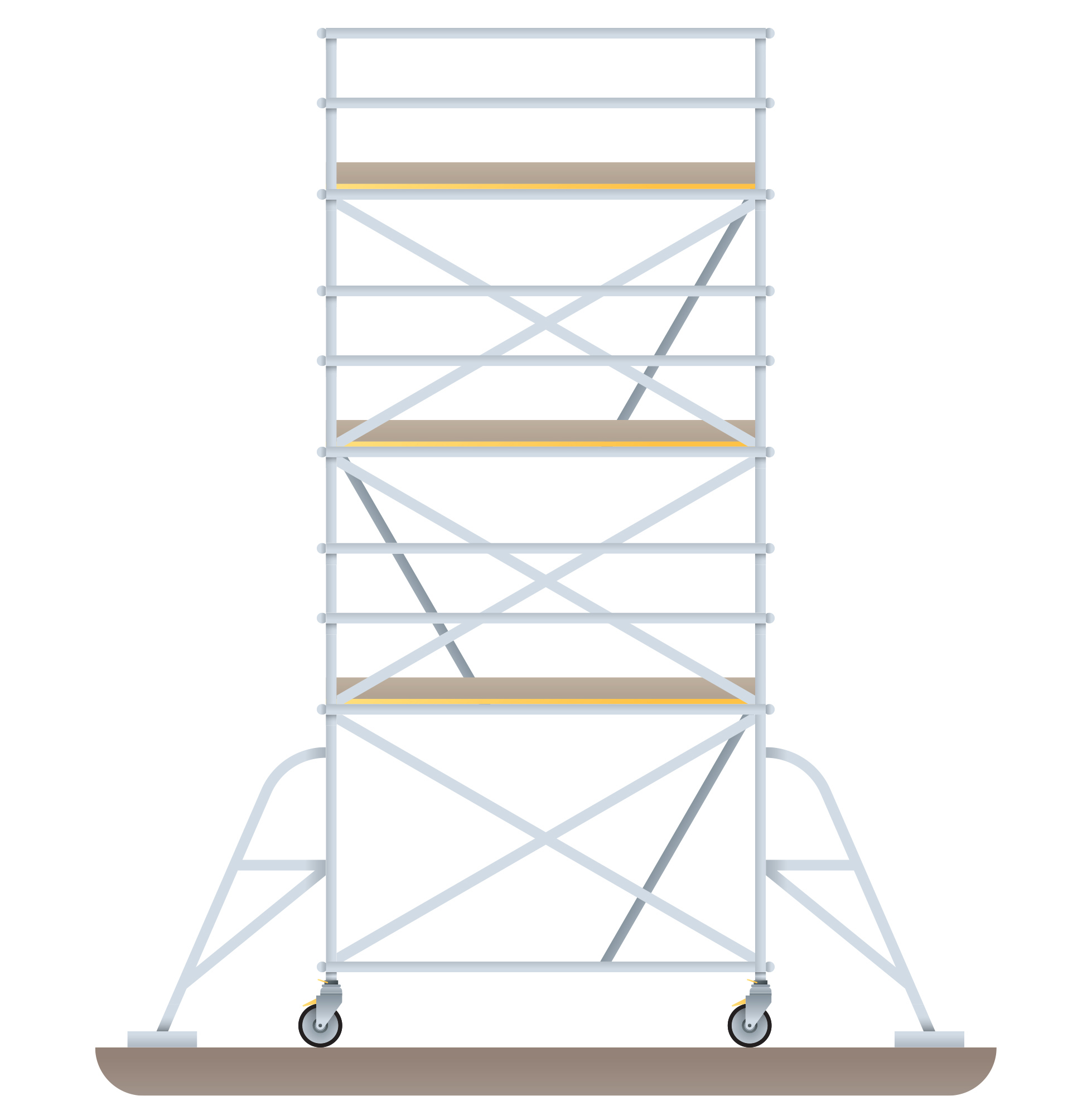
When using rolling scaffolding, the scaffolding must be secured to prevent it from falling over. Always follow the instructions for use from the manufacturer, check the maximum height of the scaffolding and use support legs, for example.
Never carry anything in your hands when climbing up and down rolling scaffolding on vertical ladders.
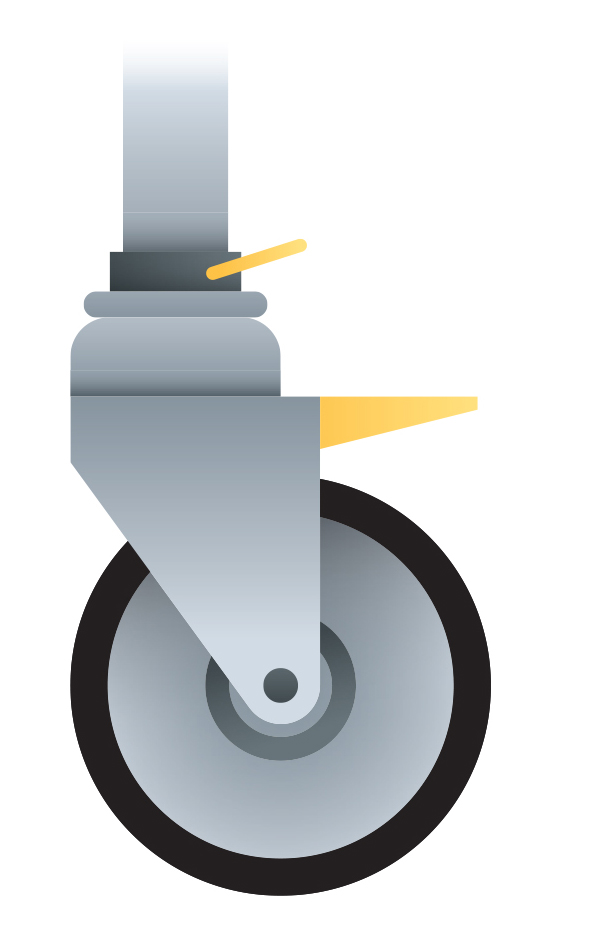
Wheels on rolling scaffolding must have brakes
and must be secured from falling off.





